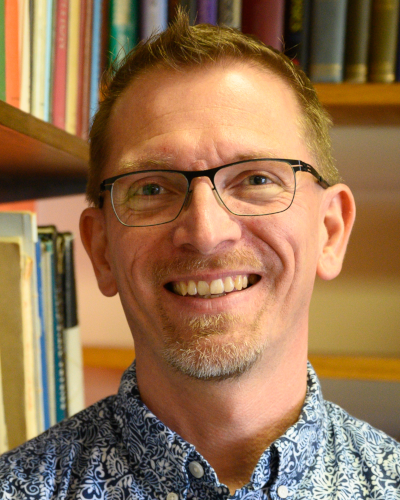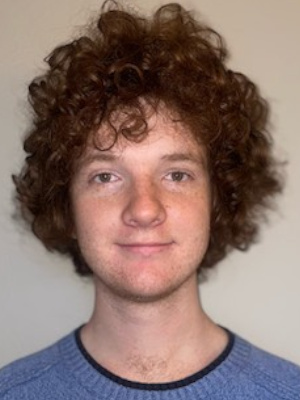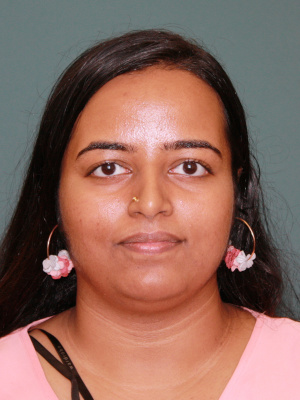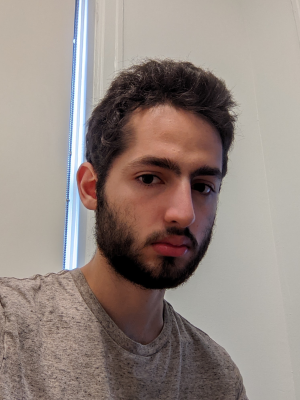Group Leader
Markus Deserno
Professor of Physics
PhD 2000 (Max-Planck-Institute for Polymer Research & University of Mainz, Germany)
Department of Physics
Carnegie Mellon University
5000 Forbes Avenue
Pittsburgh, PA 15213, USA
office: Wean Hall 6319; email: deserno@andrew.cmu.edu
I am interested in theoretical and computational biophysics, with a particular focus on lipid membranes. Computationally I use coarse-grained models of membranes, especially those of low resolution, and theoretically I apply a wide spectrum of techniques, ranging from continuum mechanics and differential geometry to statistical field theory.
Current members
In his thesis project, Seamus investigates membrane fusion—specifically how it is affected by the presence of lipids that increase the value of the Gaussian curvature modulus. Developing coarse-grained lipid models whose mean and Gaussian moduli are well controlled, the impact of “negative Gaussian curvature lipids” on fusion can be systematically studied. This has far-reaching implicatiions for drug delivery based on lipid nanoparticles.
In her graduate work, Malavika investigates the role cholesterol plays in the biophysics of asymmetric lipid membranes. She uses coarse-grained simulations and simple elastic models to understand how partitioning differences between the leaflets in conjunction with differential stress determines cholesterol’s distribution.
Farid is an undergraduate student who has been working on two projects: he assisted Malavika Varma in a project that develops ternary mixtures in the coarse-grained lipid Cooke model that are capable of exhibiting Lo-Ld phase coexistence. Farid is also developing coarse grained models for conical “nano-hats” that can bind with their inside to membranes—a project connected to a collaboration with the lab of Rebecca Taylor.
Alumni
Sam graduated with a Ph.D. thesis entitled “Mechanics and Thermodynamics of Differentially Stressed Lipid Membranes: Theory and Coarse-Grained Simulation.” In his first important paper he devised a procedure by which lipids in the coarse grained Cooke model can be kept on the side they started out with, thus enabling the simulation of asymmetric membranes (even with sizable differential stress) in this highly coarse-grained system [J. Chem. Theory Comput. 16, 7195–7206 (2020)]. Using this model, he showed that the fluid-gel transition of membranes changes in the presence of differential stress becomes very interesting (permitting phase coexistence in each leaflet even at a fixed temperature and net (zero) tension), and he developed a very neat theory for this that takes its inspiration from two coupled van der Waals gases [Biophys. J. 121, 2997–3009 (2022)]. He is also lead author on a nice mini-review that summarizes many of our recent asymmetry findings [Emerg. Top. Life Sci. 7, 95–110 (2023)]. And in his final thesis project Sam developed a method by which we can simulate membranes whose area and curvature are free to relax in simualtion—a feat he accomplished by cutting the usual periodic boundary conditions open along one direction and bandaging the resulting open edges with a patch we call “sticky tape”.
Muhammed received his PhD with a thesis on “Algorithmic Improvements for Extracting Lipid Bilayer Elastic Moduli from Height and Director Fluctuations.” He examined the way that elastic membrane moduli are typically extracted in Molecular Dynamics simulations and investigated the (many) statistical and systematic unceryainties that arise in this process. He first provided computational support to the theoretocal work of Mert Terzi, which proposed a consistent quadratic theory of bilayer curvature elasticity that includes both shape and tilt [J. Chem. Phys. 151, 164108 (2019)] and later spearheaded the investigation that examined in detail the systematic dependencies of elastic moduli on details of the continuum mapping [J. Chem. Phys. 154, 214103 (2021)].
Amirali graduated with a Ph.D. thesis entitled “Investigation of Mechanical Properties of Asymmetric Lipid Bilayers via Coarse-Grained Simulation.” He used coarse grained simulations (Martini model) combined with elasticity theory to examine the consequences of lipid membrane asymmetry. His first paper [Biophys. J. 118, 624–642 (2020)] made a big impact in the community: he showed that the interplay between lipid intrinsic curvature and packing can give rise to a difference in mechanical tension between the two membrane leaflets—a condition he termed “differential stress“. He in particular showed that beyond some critical value this stress all by itself can drive a stiffening transition in membranes. He followed this up in a second paper that investigated the relation between this transition and the membrane’s main phase transition [J. Chem. Phys. 154, 014704 (2021)], a topic later pursued in more detail by Sam Foley, with Amirali also contributing [Biophys. J. 121, 2977–3009 (2022)]. Amirali is also a co-author on a nice mini-review that summarizes many of these findings [Emerg. Top. Life Sci. 7, 95–110 (2023)].
Daniel was an undergrad student who investigated fluctuations of membtane buckles far away from the weakly-deformed regime. Specifically, he investigated the second variation of the planar Euler-buckling functional, which leads to Lamé functions.
Derek was an undergrad who ran simulations of Cooke-model asymmetric membranes. He was especially interested in what happens when they gets close to their gel transition.
Fred was an undergrad who worked with us on the phase behavior of asymmetric lipid membranes.
Vikranth was a high school summer student who worked with us on coarse-grained simulations of asymmetric lipid membranes.
Yiheng visited us as an exchange student between the fall of 2017 and the fall of 2018. Back then, he was working towards his PhD in the group of Zhanchun Tu at Beijing Normal University, interested in the dynamics of active matter. While working here, Yiheng developed a theoretical framework to study the motion of topological defects in active liquid crystals confined to the surface of a sphere. In fact, he could basically boil down the problem to a set of ordinary differential equations satisfied by the defects and their orientation, which he then published [Phys. Rev. E 102, 012607 (2020)]. Fun fact: he has also worked on first integrals of the axisymmetric membrane shape equation [Chinese Physics B 27, 038704 (2018)], which he published with Zach and Zhanchun.
Mert graduated with a thesis on “Curvature-Tilt Theories of Lipid Membranes.” He used covariant differential geometric techniques, combined with thin plane continuum elasticity, to systematically construct energy functionals for fluid lipid membranes. Following a famous paper by Hamm and Kozlov, he reproduces their results, but argued for the existence of an additional tilt-curvature coupling term [J. Chem. Phys. 147, 084702 (2017)]. Mert later found out that there are even more quadratic terms missing, as outlined in a (hopefully!) consistent functional he proposed two years later [J. Chem. Phys. 151, 164108 (2019)] (tested numerically by Muhammed Ergüder), and he had a first stab at bi-quadratric terms (quadratic in tilt and curvature) [CISM lecture notes 577]. In an additional project, Mert investigated the Poisson ratio of membranes, showing it to be very close to ν = ½, but with a possibly intriguing dependence on membrane depth [Soft Matter 15, 9085–9092 (2019)].
Pablo joined as a postdoc, having just graduated with Jemal Guven. He is an expert in filament/membrane elasticity and differential geometry, and he was instrumental in two exciting projects, both done in collaboration with Zach. In the first, Pablo investigated the shapes taken by close elastic filaments constricted to reside on the surface of an infinite cylinder, in particular their stability and the forces constraining them to the surface [Phys. Rev. E 91, 063203 (2015)]. In the second project, Pablo investigated the binding energetics of open filaments (with a net spontaneous curvature) binding to the neck region of a catenoid [Biophys. J. 111, 2470–2480 (2016)]. If in particular the filaments can change their length (being coupled to a reservoir of “monomers” of chemical potential μ), their length and constriction force becomes complicated functions of the ratio between neck- and filament curvature, with multiple interesting implications to the (im-)possibility of dynamin-mediated membrane fission being driven entirely by passive processes.
Nick worked on the elasticity of protein α-helices, a project inspired by our desire to understand SNARE mediated membrane fusion. He examined the buckling behavior of these filaments, which is more complicated than that of membranes, since filaments can both twist and bend, and both moduli affect the equilibrium state in different ways (plus, thermal fluctuations are generally much more pronounced for these 1d-systems). Unfortunately, Nick has decided to leave the program.
In his PhD thesis “Geometry, Mechanics, and Biology Applications for Membranes and Filaments” Zach has investigated the interplay between elastic filaments and elastic surfaces, with a special focus on how the protein dynamin drives membrane fission. Together with Pablo and Jemal, he examined the shapes closed elastic filaments take when confined to a cylindrical surface [Phys. Rev. E 91, 063203 (2015)], and how open filaments settle on a catenoidal neck [Biophys. J. 111, 2470–2480 (2016)]. Conversely, he has theoretically studied the equilibrium shapes of curvature-elastic surfaces subject to helical boundary conditions [Traffic 19, 328–335 (2018)], and he joined forces with Martina Pannuzzo to use such insights to analyze coarse-grained simulations of dynamin fission events [eLife 2018;7:e39441]. In an interesting side project, he has proposed nonlinear corrections to quadraric curvature elasticity to predict the unusual stress-strain relations of buckled gel-phase lipid membranes, as simulated by Patrick Diggins [J. Am. Chem. Soc. 137, 12752–12755 (2015)].
During her time as a postdoc in the Deserno group, Martina worked on two major projects: first, in collaboration woth Bob Tilton from Chemical Engineering she investigatred the responsive behavior of a branched-chain polymers and polymer networks using coarse-grained simulations. The important focus was to understand how tuning side-chain solubility relative to the backbone can be used to control the chain swelling behavior [Soft Matter 14, 6485-6495 (2018)]. And in a second project Martina developed a novel coarse-grained model of helical dynamin filaments constricting a membrane neck, using it to test a number of hypothetical fission scenarios. Together with Zach McDargh she identified a crucial degree of freedom exploited by the fission machinery: the tilting of PH-domains, which effectively amounts to a twisting of the heklical filament around its material axis [eLife 2018;7:e39441].
Chris was an undergrad student who investigated higher order curvature corrections in fluid lipid membranes by simulating pulled tethers using the Cooke model.
Ruvini was an undergrad student who investigated higher order curvature corrections in fluid lipid membranes by simulating pulled tethers using the Cooke model.
Changjiang was an undergraduate exchange summer student, visiting us from USTC, who worked on the construction of elastic networks for proteins, ande their systematic reduction by exactly integrating over elastic degrees of freedom. His work with Patrick and Raffaello Potestio led to a (somewhat delayed!) publication [J. Chem. Theory Comput. 15, 648–664 (2019)].
A PhD student in our group, Xin wrote a thesis on “Elasticity of lipid membrane leaflets: Determining pivotal plane and tilt modulus in computer simulations“, relying in particular on an analysis of buckled membranes. He first showed that the so-called pivotal plane of a membrane leaflet can be determined not just from a global lipid imbalance across curved membranes (say, spherical vesicles), but also from a (semi-) local imbalance over sections cut out from a complete buckle [J. Chem. Phys. 143, 164109 (2015)]. Xin then noticed that the answer depended systematically on the “reference bead” used to count a lipid inside or outside of a given cut, because curvature gradients tilt lipids. Fascinatingly, this dependence gave him access to the membrane’s tilt modulus, using a non-fluctuation based measurement [J. Phys. Chem. B 120, 6061–6073 (2016)].
Venky joined us as a postdoc, having just graduated with Janos Lanyi at UC Irvine. He was part of a collaboration with Christoph Globisch and Christine Peter, in which we investigated the assembly and elasticity of Cowpea Chlorotic Mottle Virus (CCMV), a well-studied model system for symmetric capsid assembly. In a first paper, Venky examined how the elasticity and conformational flexibility of single proteins and small oligomeric aggregates can be reproduced by amending a coarse-grained MARTINI-level model of a single monomer with a suitably chosen elastic network, which is optimized solely based on input obtained from atomistic monomer simulations [PLoS ONE, 8(4): e60582 (2013)]. In a follow-up paper, he showed that the breaking behavior of a thus-parametrized complete viral capsid is highly informative about the stability of capsomer interactions (belonging to the various distinct symmetry classes), and it can even support recent experimental evidence about the order of capsid assembly [Eur. Phys. J. Sp. Topics 225, 1757–1774 (2016)].
Jason was an undergrad student working with us on the determination of the Gaussian curvature modulus via the patch closure method, especially for lipid mixtures. In contrast to the approach published by Mingyang, which let patches close all by themselves, Jason held the patches inside a spherical slit and measured the confining force to deduce the Gaussian modulus. Everything looked perfect and publishable, until at the very last moment Jason found a factor-of-2 problem, which ruined the excellent agreement with our theory, and which despite intensive hunting we were never able to track down—which stymied the paper. That was pretty sad, but thankfully Jason moved on to a successful academic career all the same.
Robert wrote his thesis about “Effective field theory of particle interactions mediated by fluid surfaces.” Building on work started by Cem, he investigated the interactions of particles bound to either fluid or elastic surfaces that are mediated by the surface itself. In particular, he examined energetic and entropic capillary interaction between ellipsoidal particles, which due to the broken rotational symmetry is much more intricate than the axisymmetric case [Phys. Rev. E 89, 062102 (2014)]. Together with Cem, he also wrote a comprehensive review on using EFT to compute such interactions, and discussing a number of confusing or incorrect results that had acumulated in the literature [Adv. Colloid Interface Sci. 208, 89–109 (2014)]. His thesis also offers an insightful analysis of the closely related problem of interactions between charged metallic spheres.
John was an undergraduate student who worked with us—especially Mingyang—on the determination of the Gaussian curvature modulus using the patch closure method. He is a co-author on the paper that came out of this [Biophys. J. 102, 1403–1410 (2012)].
Jared was an undergraduate student who worked, under the supervision of Zunjing, on coarse-graining of lipid membranes.
Patrick worked on several aspects of biomolecular elasticity and graduated with a thesis on “Investigation of Elastic Properties of Lipids and Proteins using Computer Simulations.” In his first project, he teamed up with Mingyang and contributed MARTINI-level simulations of buckled lipid membranes in order to determine their bending modulus [J. Chem. Phys. 138, 214110 (2013)]. Having seen how well this worked, the next goal was to use buckling as a means to measure the bending rigidity of gel-phase membranes, which is extremely hard to do via a conventional fluctuation analysis. However, Patrick noticed that the resulting stress–strain relations look extremely unusual, and in collaboration with Zach, who provided essential theory, he managed to instead analyze these data with a model that assumed curvature-softening [J. Am. Chem. Soc. 137, 12752–12755 (2015)]. In an independent project, spear-headed by Raffaello Potestio and helped by summer-student Changjiang, Patrick examined a systematic coarse-graining strategy for proteins, in which degrees of freedom are removed and it is tested how well the resulting coarse-grained Gaussian network can still be represented by simple springs (as opposed to interactions that are quadratic but not representable by a single center-to-center harmonic degree of freedom) [J. Chem. Theory Comput. 15, 648–664 (2019)].
Xiaofei joined us as a postdoc, having just received her PhD in the group of Jim Gunton at Lehigh. She investigated the assembly of coarse grained capsomers into viral capsids, being part of a collaboration with Christoph Globisch and Christine Peter. Unfortunately, Xiaofei left us after just one year.
Karpur was an undergrad student who worked with us on the differential geometric description of lipid membranes. He was especially interested in the covariant formulation of the membrane stress tensor.
Senthil was an undergraduate student who worked with us (specifically Tristan) on the folding and aggregation of amyloid Aβ-peptides, and especially how this is affected by smaller solvents (such as hexafluoroisopropanol, or “HFIP”)—a subject that became part of his Master’s thesis.
Mingyang wrote his PhD thesis about “Designing polymer-tethered membrane-nanoparticle composites,” but he actually worked on a much wider set of topics. The title of his thesis refers to a project done in an exciting collaboration with Francesca Stanzione, Amadeu Sum, and Roland Faller, where the goal was to create polymer-tethered nanoparticles that “drape” a lipid membrane around a solid nanoparticle core, and to which he contributed a set of coarse-grained simulations [ACS Nano 9, 9942–9954 (2015)]. But Mingyang also worked on two projects that aimed to measure key elastic properties of lipid membranes. In a first one, he teamed up with Patrick to develop a method of measuring the bending rigidity of membranes via “buckling” [J. Chem. Phys. 138, 214110 (2013)]. In a second, he set out to measure the much more elusive Gaussian modulus of a membrane. Working with our undergrad John, Mingyang measured the Gaussian modulus by monitoring the closure probability of variously curved membrane patches [Biophys. J. 102, 1403–1410 (2012)]. This paper was done using the highly coarse-grained Cooke model. In a second paper, in which Mingyang teamed up with Djurre de Jong and Siewert-Jan Marrink, he repeated this idea for the less coarse-grained MARTINI model [Faraday Discuss. 161, 365–382 (2013)].
Cem worked on the forces which particles experience when they adhere to fluid surfaces, and he wrote his PhD thesis about the “Effective Field Theory of surface mediated forces in soft matter.” We learned the “EFT framework” in a great collaboration with Ira Rothstein, and Cem used it to calculate the fluctuation (“Casimir”) part to the Capillary (= surface tension) or elastic (= bending energy) interaction between circular particles bound to such films, [Europhys. Lett. 96 20003 (2011)]. In a follow-up paper he added many more interactions to the Capillary Casimir case, way more than had previously been calculated, which proves the formalism to be very systematic and transparent [Phys. Rev. E 85, 011140 (2012)]. Undaunted, Cem then did the same for the more cumbersome case of fluctuation-mediated interactions on curvature-elastic membranes, adding again many orders past the ones previously known (in fact, the first published subleading correction missed an important lower-order term) [Phys. Rev. E 86, 031906 (2012)]. Finally, Cem and Robert co-wrote an extensive review that introduces this EFT formalism to a wider soft-matter audience [Adv. Colloid Interface Sci. 208, 89–109 (2014)].
Zunjing joined us as a postdoc, having previously held such a position in Amsterdam (NL), Edinburgh (UK), and Salt Lake City (Utah). She came to us as a highly skilled Molecular Dynamics simulator with ample experience in multiscaling. She developed a solvent-free membrane model with a resolution of ~16 beads per lipid (slightly finer than MARTINI), using structure-based coarse-graining methods [J. Phys. Chem. B 114, 11207 (2010)]. It reproduces many structural, thermodynamic, and elastic properties of the lipid she aimed to match (POPC). Remarkably, Zunjing could even show that a simple swap of tails (POPC→DPPC or POPC→DOPC) essentially quantitatively reproduces area per lipid and even the shift in the main phase transition of the new lipids, showing that transferability of this model is extremely high [New J. Physics 12, 095004 (2010)]. In a collaboration with Tristan, her model ended up cross-parametrized with Tristan’s protein model, so that important thermodynamic observables—in particular free energy of insertion profiles—could be accurately reproduced [J. Chem. Phys. 140, 115101 (2014)].
Tristan was the first PhD student in the Deserno Group @ Carnegie Mellon, and he wrote his thesis on “Unconstrained Structure Formation in Coarse-Grained Protein Simulations.” He developed a coarse-grained protein model that is in some sense complementary to the MARTINI model, in that it pays more attention to the backbone and can hence reproduce secondary structure motifs [J. Chem. Phys. 130, 235106 (2009)]. As an interesting first application, for which we were joined by Michael Bachmann, Tristan investigated the interplay between secondary and tertiary structure formation in protein folding cooperativity [J. Am. Chem. Soc. 132, 13129–13131 (2010)], and how this plays out for helix-bundle proteins [Biophys. J. 100, 2764–2772 (2011)]. Teaming up with Christoph Globisch and Christine Peter, he also examined the fascinating story how a 6-strand β-barrel forms at the 6-fold sites of a CCMV viral capsid, but no corresponding 5-strand barrel forms at the 5-fold sites [J. Chem. Theory Comput. 8, 3750–3758 (2012)].
Martin worked with Markus in pre-CMU times, first for his Diploma thesis, and then his PhD thesis, which had the title “Theoretical studies of fluid membrane mechanics.” In a long-going and very productive collaboration with Jemal Guven, Martin examined the stress-tensor for lipid membranes and applied this formalism to the problem of mediated interactions between membrane-bound particles. First for the case of a plain Helfrich membrane [Europhys. Lett. 69, 482–488 (2005)], and then followed by more complicated functionals [Phys. Rev. E 72, 061407 (2005)], he derived interaction forces determined purely by the geometry—including some rather subtle torque-balance conditions in the case of antisymmetric binding [Phys. Rev. E 76, 011921 (2007)]. He also investigated the fascinating problem of boundary conditions that arise when fluid surfaces adhere to curved substrates [Phys. Rev. E 76, 011605 (2007)]. Martin also contributed careful theoretical and numerical studies to an experimental project—jointly with Siegfried Steltenkamp, Christian Hennesthal, Claudia Steinem, and Andreas Janshoff—in which membranes spanned over nanopores were indented with an AFM tip to measure their rigidity [Biophys. J. 91, 217–226 (2006)]. Together wirth Davood he also investigated the subtle mechanical phase behavior of this process in a very detailed follow-up study [Phys. Rev. E 74, 061914 (2006)]. Finally, he contributed theoretical back-up for the big team-effort (Ben Reynwar, Gregoria Illya, Vagelis Harmandaris, and Kurt Kremer) of understanding how curved caps adhering to membranes can cooperatively aggregate and drive vesiculation [Nature 447, 461–464 (2007)].



